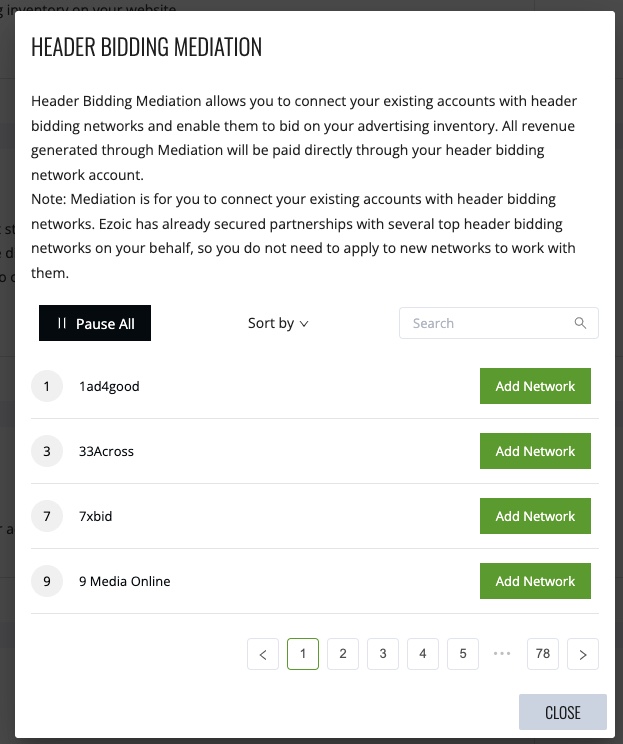If you enjoy creating content, there’s no better way to keep doing what you love the most than monetizing it with ads. As you steadily earn a following (and subsequently, ad revenues), it’s a great sense of encouragement to continue pursuing what you do. However, the tricky part will come down to choosing an ad provider that suits your needs, such as Ezoic vs AdPushup.
At the end of the day, you’ll need an ad provider that’ll earn you handsomely with ad revenues, bar none. Yet, you’d still have to worry about optimizing the user experience, and making sure those ad placements are a complimentary item, rather than a hindrance. Given enough time, picking the right partner, either Ezoic vs AdPushup will be consequential to your site’s growth.
For now, though, which ad network does your website need… Do you yearn for the automated ad layout optimizations by Ezoic’s AI and machine learning computation? Or, would you rather opt for AdPushup’s synchronous A/B testing and automatic ad layout optimizer? It sounds like Ezoic vs AdPushup are quite similar in how they function, but there are crucial differences…
What Is Ezoic?
First off, let’s start comparing Ezoic vs AdPushup with an analysis of the former. Ezoic is one of the top premium ad network providers out there. It’s a reputation earned through their unique method of optimizing ad placements on a page, designed to accrue maximal engagement, and thus, higher ad revenues. Most competing ad providers out there rely on data and manual ad placements.
With Ezoic, they instead adopt the much more efficient system of using computers. Specifically, a network of artificial intelligence and machine learning processing, which continually analyses the behavior of your site’s visitors. In doing so, Ezoic’s neural brain can understand what ad layout works best (and what doesn’t work as well), before making adjustments to the ads.
In particular, Ezoic would change the ad layout, by altering the placement, density, sizing, and the type of ads that get shown. It would, in turn, improve user interaction and engagement for those ads. With enough pageviews and impressions, this is how Ezoic would net you higher ad revenues than most of its competitors. On top of that, Ezoic would also optimize the UX.
Ezoic’s Key Features
There are a few other handy solutions and services that Ezoic provides to publishers, as well…
- SEO Tag Tester is designed to analyze and test the title tags and URLs on a page. In so doing, it could even change them outright to gain a better SEO.
- Mediation is a fascinating feature where you’ll monetize your site with Ezoic, alongside Google AdSense. If Ezoic finds that Google could earn you more in ad revenue, it’ll swap to their ads.
- Leap is Ezoic’s in-house web optimization tool. Using this, you can see how slowly or quickly the pages on your site load, and could troubleshoot it from there to make it load faster.
- Ad Tester is the aforementioned AI and machine learning-based ad layout optimizer. It can test thousands of ad layout combinations at once and picks the best one.
What Is AdPushup?
Moving on, how does the latter in Ezoic vs AdPushup differ from Ezoic? For starters, AdPushup also uses machine learning to automate the calibration of ad layouts on a page. This is done in conjunction with A/B testing that repeatedly finds and nails down the most ideal ad layout for a page. It would generate, move, or re-adjust ad units on a page to meet the right balance.
On the one hand, it’s been designed to attract the keen eyes of site visitors. Thus, driving more interactions and clicks for those ads, which consequently means higher ad revenues for you. In addition, this is partly thanks to AdPushup’s close-knit relationship with over 50 ad exchanges. This ensures that your site gets nothing short of the very best, high-quality ads on the market.
Aside from that, AdPushup also integrates the world’s bleeding-edge ad tech systems. Parts of it include real-time bidding to net you better monetization yields from displaying ads. Yet, it’s built to make sure that those ads won’t clutter up the user experience. Another key benefit of AdPushup is its ease of use, thanks to the simple integration steps and set-up processes.
AdPushup’s Key Features
For publishers, AdPushup has ample add-on tools and services that might help out a lot…
- With real-time bidding data on hand thanks to its mediation tools, AdPushup would allow for ads from other networks to be shown, if AdPushup finds that you can earn more with them.
- AdBlock Recovery could recoup losses taken by publishers due to AdBlock software, thanks to AdPushup’s pro-insertion tech that recovers losses that publishers would’ve otherwise taken.
- AMP Ad Units are a trick by AdPushup to balance out highly lucrative header bidding ads with lightweight ad serving. For mobile browsers, ads load faster and take up fewer resources.
- Header Bidding is one of the most valued features within AdPushup’s arsenal. By opening up the bidding process for ad units on your page, it’ll enable you to earn more from them.
What Are The Differences Between Ezoic Vs AdPushup?
While Ezoic Vs AdPushup does expose some similarities in their respective adoption of machine learning, there are several key differentiations…
Setup And Integration Process
AdPushup is far easier to set up and get going compared to the myriad of complex hurdles required for Ezoic. The setup processes, not to mention managing it in the future, are less of a headache with AdPushup. So, it’s a lot easier for non-techy folks.
Minimum Requirements
AdPushup requires that your site earns at least $1,000 in monthly ad revenues before you could monetize with them. Ezoic is more approachable to small publishers. Their Access Now program is catered for sites with fewer than 10,000 monthly pageviews.
Site Performance
While Ezoic’s integration procedures are more of a hassle, such as having to set up nameservers, they at least won’t slow down your site too much. On the other hand, the easy-going setup with AdPushup through JavaScript does incur some speed penalties.
Advertising Marketplace
Ezoic sources ads from Google’s AdX exchange, while AdPushup can source ads from an extensive variety of both AdX and third-party marketplaces. With a wider pool of advertisers to pick from, this gives publishers greater options to maximize ad earnings.
Accounts Manager
Both Ezoic vs AdPushup offers publishers a personal touch with dedicated account managers to help them out. This includes troubleshooting any issues, as well as giving insights into the most optimal ad layouts, and tips on how to grow and expand your site.
Pricing And Fees
Another similarity is the pricing and fees between Ezoic vs AdPushup. They both charge publishers with a revenue-sharing model. In the case of Ezoic, their cut is a fairly low 10% from your ad revenues. AdPushup’s revenue share cut is a bit more flexible for publishers.
Ad Revenues
When looking at how much you’ll earn, Ezoic generally outperforms AdPushup by quite a large margin. This is especially true for publishers whose traffic and the audience came from international markets, regardless of your content’s niche or genre.
Add-On Services
Ezoic vs AdPushup has been fairly generous to their users. Once you sign up to Ezoic, you can get access to solutions such as a free CDN, or perhaps even host your videos there. AdPushup also has its fair share of tools, such as AdBlock recovery and mediation.
Payment
When you’re ready to withdraw your ad revenues, you can expect to get it first if you use Ezoic. They have a standard 30-day payment window. On the flipside, AdPushup has a 45-day payment timeframe after the end of the month before you can get your ad earnings.
Between Ezoic Vs AdPushup, Which One Is Better?
Having assessed Ezoic vs AdPushup, which among them would be more suitable for you, then? Both of them feature respective pros and cons that might be considered deal-breakers. Yet, it’s also worth looking at the compelling features and quirks of these two ad providers, and figuring out who’d be a more perfect fit. Comparing them both, our money still goes out to Ezoic.
Ezoic’s lower requirements, and great customer support, on top of the oft-high ad revenues, are far beyond what we’d expect from competing ad providers. They’d make a great partner for every kind of publisher, whether you’re just starting out, or are already an established publication. It far outweighs the sometimes complicated setup and integration required to get started.
Yet, we still have to give praise to AdPushup for its ease of use, making it a good choice for publishers who don’t have extensive technical knowledge. Technically, they don’t generally net you as much in ad earnings compared to Ezoic. However, there may be specific niches or genres of content that might be more compelling for its advertisers. Plus, there are many useful add-ons.
Solutions such as recovering losses from AdBlock and lightweight ads for a smoother browsing experience could prove valuable for your site. If all that you’re concerned about is ad revenues and having more control over the ads on your page, Ezoic remains king in this contest. Though, AdPushup has the unique traits that make it equally worthwhile if you’d like to give them a go.







